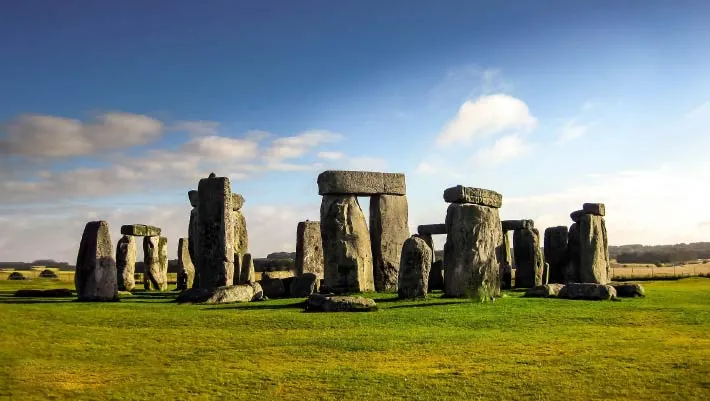
Mystery of Stonehenge Deepens: Cow Tooth Reveals Welsh Connection!
2025-08-25
Author: John Tan
Unveiling Ancient Secrets at Stonehenge
In a groundbreaking discovery, archaeologists from University College London have unearthed a molar tooth of a female cow at the iconic Stonehenge site, shedding new light on the origins of its monumental stones.
A Journey Back in Time
This ancient tooth, recovered from the remains of an elderly cow buried in the ditch surrounding Stonehenge, dates back to 2995-2900 BCE. Professor Michael Parker Pearson and his team used isotope analysis to trace the origins of this cow back to Wales, specifically between 3350 and 2920 BCE.
Cattle: The Unsung Heroes?
"This incredible find reinforces Stonehenge's connection with south-west Wales, where the mystical bluestones originated," stated Professor Parker Pearson. He tantalizingly suggested that these cattle may have played a pivotal role in transporting the massive stones.
Unraveling the Cow’s Life Story
The meticulous study involved slicing the cow's third molar into nine sections, revealing invaluable insight into her life. The team measured various isotopes—carbon, oxygen, strontium, and lead—to piece together her environmental journey.
Their findings showed that throughout her growth, the cow's diet oscillated with the changing seasons, indulging in woodland vegetation during the winter and grazing on open pastures by summer. Notably, the strontium isotopes pointed to the possibility of seasonal movement or even importing winter fodder.
Tracing Geological Roots
The lead isotopes offered even more surprises, indicating a connection to much older geological areas like the Preseli Hills in Pembrokeshire, Wales. This aligns perfectly with theories about where Stonehenge's bluestones were originally sourced.
A Glimpse into the Past
This compelling research doesn't just illuminate the cow's dietary habits; it suggests she was likely pregnant or nursing during the period her tooth formed. Testing the hypothesis using advanced peptide-based sex determination techniques confirmed a high probability that this ancient tooth belonged to a female.
Revisiting Narratives of History
Professor Richard Madgwick from Cardiff University emphasized that this singular cow's biography adds a unique dimension to the grand narrative of Stonehenge. By focusing on the life of this animal, researchers have unearthed a fresh perspective on the awe-inspiring monument.
A New Era for Stonehenge Studies
As scientific tools evolve, the journey of this remarkable cow could reveal even more secrets from 5,000 years ago. The findings, published on June 17, 2025, in the Journal of Archaeological Science, transform our understanding of both Stonehenge and its ancient inhabitants.



 Brasil (PT)
Brasil (PT)
 Canada (EN)
Canada (EN)
 Chile (ES)
Chile (ES)
 Česko (CS)
Česko (CS)
 대한민국 (KO)
대한민국 (KO)
 España (ES)
España (ES)
 France (FR)
France (FR)
 Hong Kong (EN)
Hong Kong (EN)
 Italia (IT)
Italia (IT)
 日本 (JA)
日本 (JA)
 Magyarország (HU)
Magyarország (HU)
 Norge (NO)
Norge (NO)
 Polska (PL)
Polska (PL)
 Schweiz (DE)
Schweiz (DE)
 Singapore (EN)
Singapore (EN)
 Sverige (SV)
Sverige (SV)
 Suomi (FI)
Suomi (FI)
 Türkiye (TR)
Türkiye (TR)
 الإمارات العربية المتحدة (AR)
الإمارات العربية المتحدة (AR)